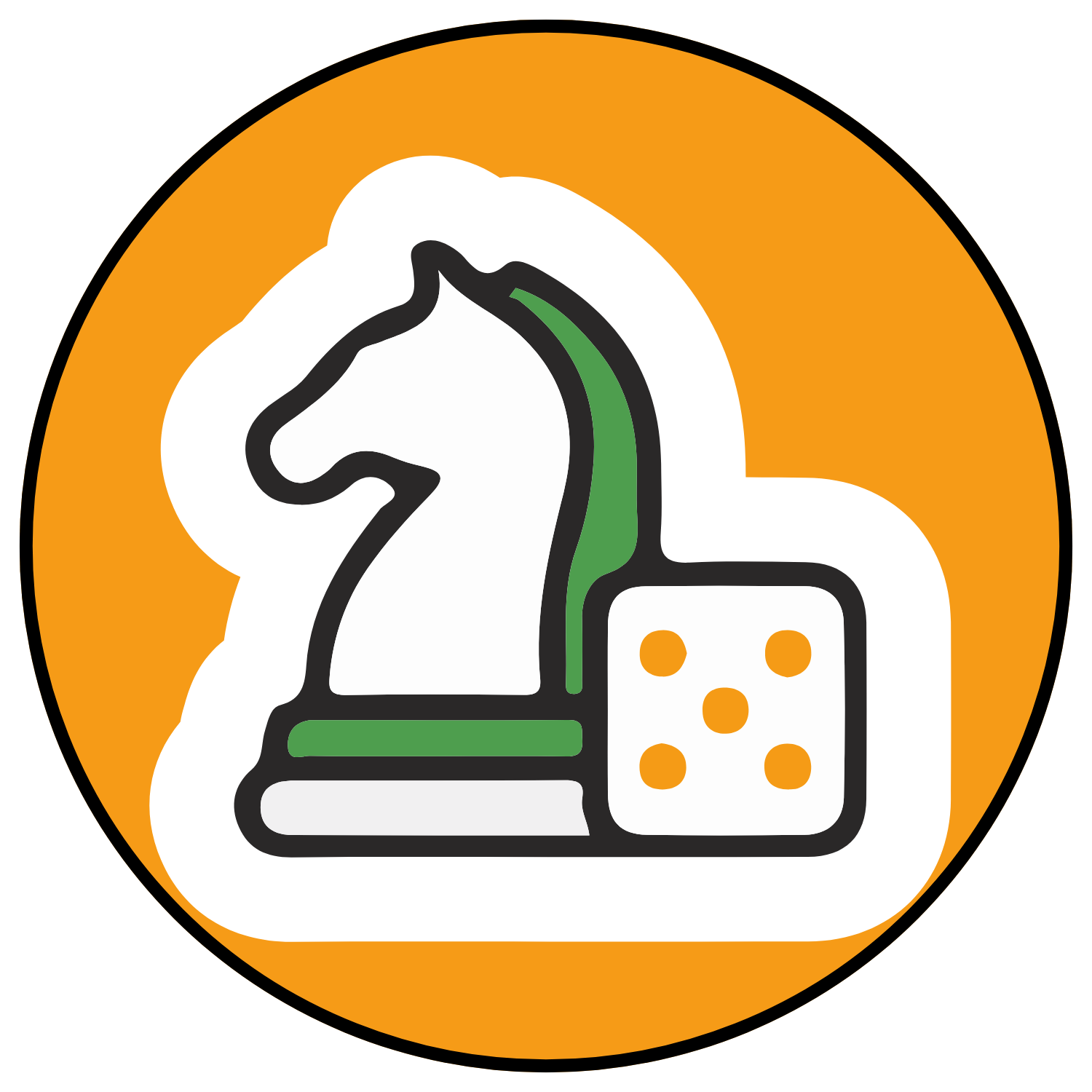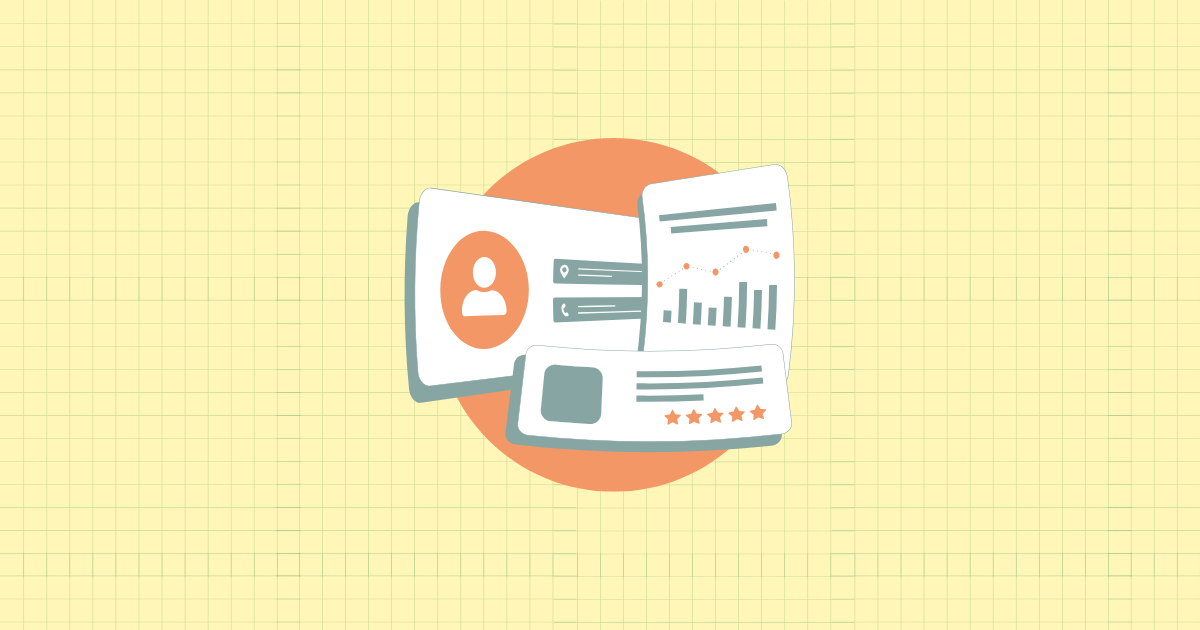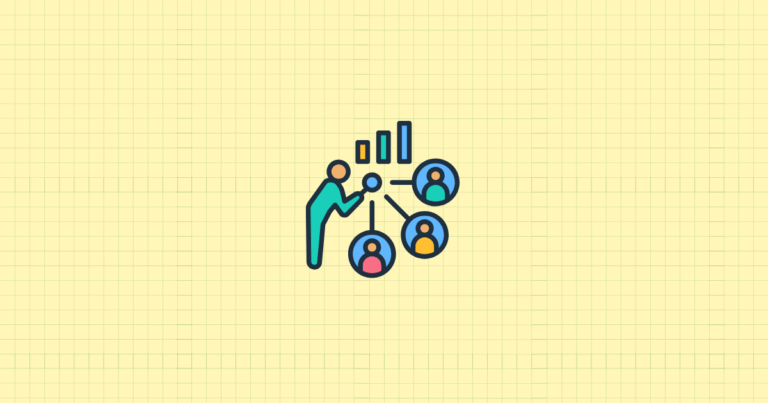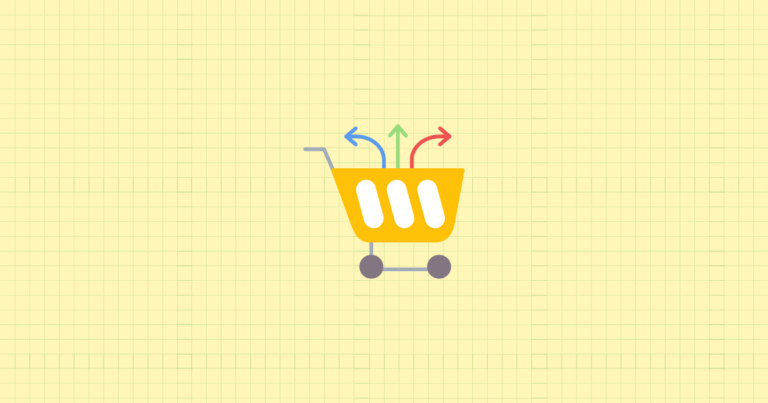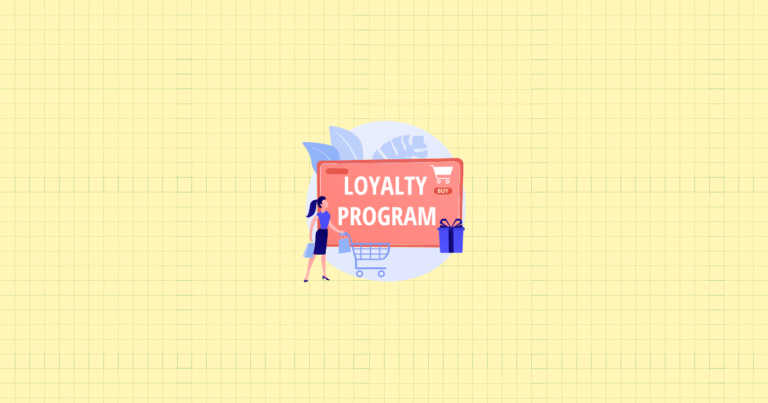You’ve likely heard it before, but it bears repeating: keeping existing customers costs significantly less than acquiring new ones. In the competitive world of e-commerce, smart Shopify store owners aren’t just focused on attracting new visitors—they’re laser-focused on turning their best customers into lifelong brand advocates. The right incentive strategy can transform occasional buyers into your most valuable asset.
Have you ever wondered why certain customers consistently spend more at your store? Or why some customers disappear after a single purchase while others return month after month? The answers lie in how effectively you recognize, reward, and nurture your high-value customers.
Understanding the Value of High-Value Customers
The 80/20 Rule in E-commerce
The Pareto Principle, or the 80/20 rule, is strikingly accurate in e-commerce: approximately 20% of your customers generate 80% of your revenue. This small but mighty segment of your customer base isn’t just spending more—they’re the economic engine of your business.
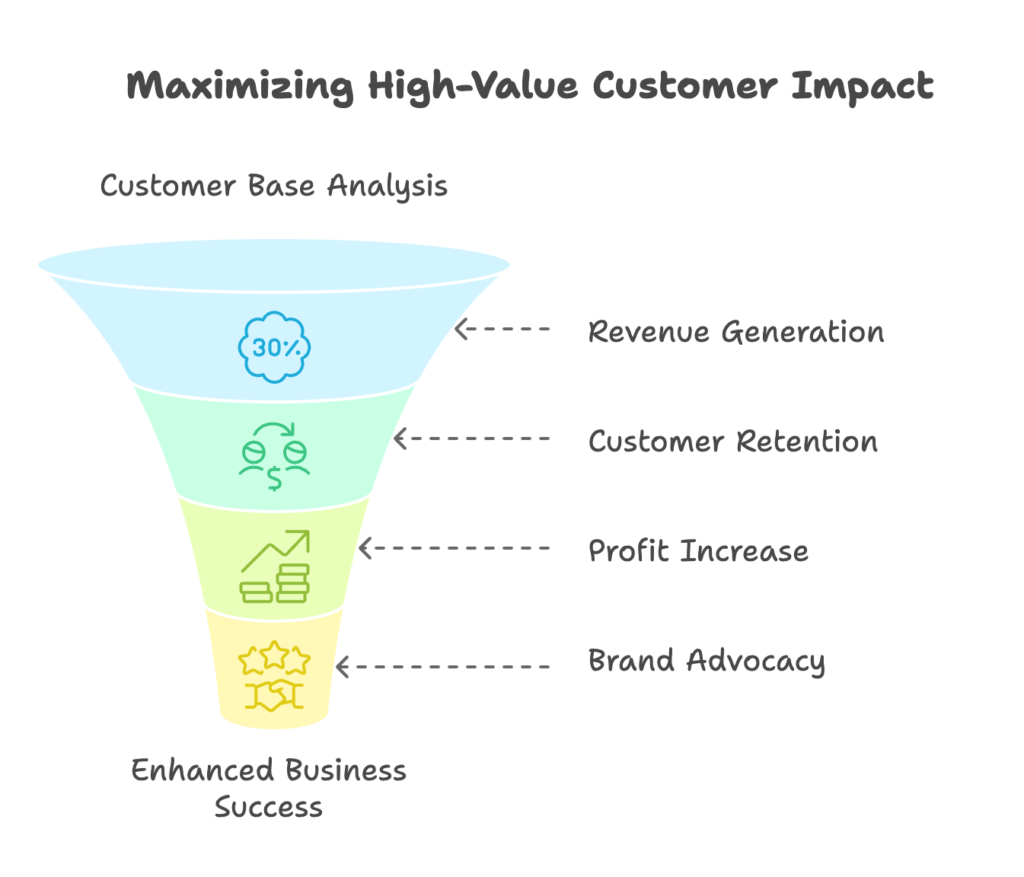
Let’s put this into perspective. If your store generates $100,000 in annual revenue, roughly $80,000 comes from just 20% of your customer base. That’s a small group of people with enormous impact on your business success. Losing just a handful of these customers could significantly affect your bottom line.
The financial impact extends beyond immediate sales. High-value customers typically have a lifetime value 3-5 times higher than your average customer. They purchase more frequently, spend more per order, and remain customers for longer periods. They’re also more likely to explore different product categories and try your new offerings.
The Cost Advantage of Customer Retention vs. Acquisition
The math is compelling: acquiring a new customer can cost five to seven times more than retaining an existing one. From ad spend to conversion optimization, the resources required to turn strangers into first-time buyers add up quickly.
Consider these statistics:
- Increasing customer retention by just 5% can boost profits by 25-95%
- The success rate of selling to an existing customer is 60-70%, while the success rate of selling to a new customer is only 5-20%
- Repeat customers spend 33% more than new customers on average
Beyond direct purchases, your best customers provide invaluable brand advocacy. They leave positive reviews, refer friends, and share your products on social media—essentially becoming an extension of your marketing team, but with greater credibility and reach.
The Psychology Behind Exclusive Customer Incentives
Emotional Impact of Receiving Rewards
When customers receive a reward or exclusive offer, their brains release dopamine—the same neurotransmitter associated with pleasure and satisfaction. This creates positive associations with your brand and encourages repeat engagement. It’s not just about the discount or free item; it’s about how receiving that benefit makes them feel.
This neurological response helps build emotional connections with your brand. A customer who feels recognized and appreciated is more likely to develop brand loyalty that transcends purely rational decision-making. They’re not just buying your products; they’re buying into your brand story and identity.
Exclusivity as a Powerful Motivator
We all want what others can’t have. Exclusive access, special treatment, and the perception of status are powerful psychological motivators that drive consumer behavior. By creating tiered incentives or VIP experiences, you tap into customers’ desire to belong to an exclusive group.
Consider how luxury brands have mastered this psychology. They don’t just sell products; they sell membership to an exclusive club. Your Shopify store can leverage the same principles, regardless of price point or industry. When a customer receives access to something others don’t have—whether it’s early product access, special pricing, or personalized service—it creates a sense of privilege that strengthens their connection to your brand.
Identifying and Segmenting Your High-Value Shopify Customers
Before you can reward your best customers, you need to know exactly who they are. Many Shopify merchants make the mistake of treating all customers identically, missing valuable opportunities to nurture their most promising relationships. Let’s explore how to identify and segment your high-value customers effectively.
Defining “High-Value” for Your Specific Store
Key Metrics to Consider
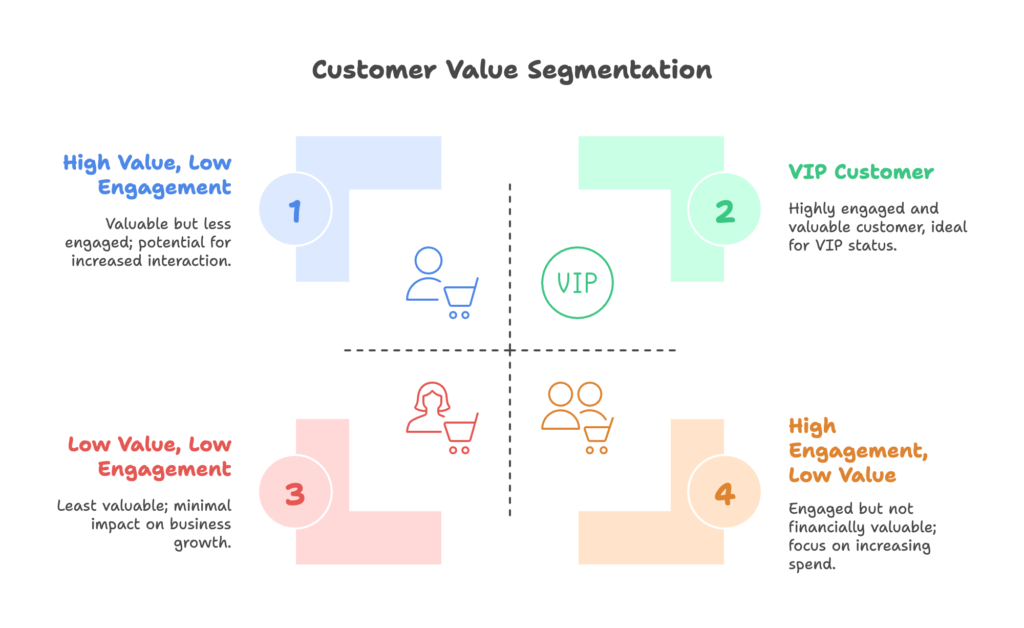
What makes a customer “high-value” varies from store to store, but several universal metrics can help you identify them:
- Purchase frequency and recency: How often do they buy, and when was their last purchase? Customers who buy frequently and recently are typically more engaged with your brand.
- Average order value (AOV): Customers who consistently spend more than your store’s average are prime candidates for your VIP segment.
- Lifetime value (LTV): This calculation predicts the total revenue a customer will generate throughout their relationship with your business. Tools like Growth Suite can automatically calculate this metric for your Shopify store.
- Engagement with marketing communications: Customers who open emails, click through on offers, and engage with your content show higher interest and potential value.
Rather than focusing on just one metric, consider creating a composite score that weighs multiple factors. A customer who spends moderately but purchases monthly might be more valuable than someone who made a single large purchase a year ago.
Creating Custom Segments in Shopify
Shopify offers several native tools to help you segment your customers:
- Customer tags: Apply tags like “VIP,” “Gold Tier,” or “Frequent Buyer” to categorize customers for targeted marketing and special offers.
- Customer groups: Create distinct customer groups with different pricing, product access, or perks.
- Shopify Flow: Set up automated workflows that tag customers based on their behavior. For example, automatically tag customers as “VIP” after three purchases exceeding $100 each.
Setting up these segments doesn’t need to be complex. Start with simple criteria and refine your approach as you collect more data. Even basic segmentation will dramatically improve your ability to deliver relevant incentives to your best customers.
Advanced Segmentation Strategies
Behavioral Segmentation Approaches
Looking beyond purchase value and frequency, behavioral segmentation considers how customers interact with your store:
- Purchase history analysis: What product categories do they prefer? Do they buy only during sales, or at full price? Are they seasonal shoppers or year-round customers?
- Product category preferences: Some customers might consistently purchase from a specific collection or category, indicating specialized interest.
- Seasonal buying patterns: Identify customers who shop primarily during holidays, seasonal changes, or specific sales events.
Using apps like Growth Suite, you can analyze customer behavior across your store to identify patterns that may not be immediately obvious. For instance, you might discover a segment of customers who only purchase when free shipping is offered, or who browse extensively before making large purchases.
Implementing Tiered Customer Groups
A tiered approach to customer segmentation creates clear progression paths that encourage increased engagement. Consider a structure like this:
- Silver tier: All customers who have made at least 2 purchases in the last year
- Gold tier: Customers with 4+ purchases or $500+ spent in the last year
- Platinum tier: Customers with 8+ purchases or $1,000+ spent in the last year
The key is to establish clear qualification criteria and communicate them to your customers. When customers understand how to move up to the next tier and what benefits they’ll receive, they’re more likely to adjust their purchasing behavior to reach those milestones.
Make advancement between tiers attainable but meaningful. If qualification is too easy, the exclusivity loses its appeal. If it’s too difficult, customers may become discouraged and disengage. Finding the right balance for your specific customer base is crucial for a successful tiered program.
Types of Exclusive Incentives for High-Value Shopify Customers
Now that you’ve identified your high-value customers, it’s time to design compelling incentives that will delight them and strengthen their loyalty. The most effective approach combines financial incentives with exclusive experiences and recognition.
Financial Incentives
Personalized Discount Structures
Discounts remain one of the most straightforward and effective incentives, but for high-value customers, generic coupons won’t suffice. Consider these personalized approaches:
- Tiered percentage discounts: Offer escalating discounts based on customer value (e.g., Silver: 10%, Gold: 15%, Platinum: 20%)
- Exclusive discount codes: Create unique codes that only work for customers tagged with specific VIP designations
- Automatic discounts: Set up discounts that apply automatically at checkout for eligible customers, removing friction from the redemption process
Using Growth Suite’s personalization features, you can create discount codes that are uniquely tailored to individual purchasing patterns and preferences. For instance, offering higher discounts on categories a customer has shown interest in but hasn’t purchased from yet.
Store Credit and Cashback Programs
Store credit creates a compelling reason for customers to return, while simultaneously making them feel valued:
- Tiered store credit: Award store credit for high-value purchases (e.g., $10 credit for every $100 spent)
- Surprise credit bonuses: Occasionally surprise your best customers with unexpected store credit as a thank you for their loyalty
- Cashback rewards: Implement a cashback system where customers earn a percentage back on every purchase, redeemable on future orders
When implementing these programs, carefully balance reward values with your profit margins. The goal is to increase customer lifetime value while maintaining sustainable profitability. Track redemption rates and resulting purchases to measure program effectiveness and make adjustments as needed.
Non-Financial Incentives
Early Access and Exclusivity
Sometimes the most powerful incentives aren’t financial at all—they’re experiential:
- Pre-launch access: Give VIP customers early access to new products or collections before they’re available to the general public
- Exclusive product variants: Create special product versions, colors, or bundles available only to your top-tier customers
- Limited-edition items: Offer products with limited quantities exclusively to your highest-value customer segments
These exclusivity-focused incentives create a sense of status and special access that many customers value more than discounts. They also help generate excitement and anticipation for new releases, potentially driving higher full-price purchases.
Enhanced Customer Experience
Superior service can be a powerful differentiator in today’s competitive e-commerce landscape:
- Priority customer service: Provide dedicated support channels or faster response times for VIP customers
- Personalized shopping assistance: Offer personal shopping services, product recommendations, or style advice for top customers
- Custom unboxing experiences: Create memorable unboxing moments with premium packaging, handwritten notes, or small gifts for your best customers
These enhanced experiences make customers feel valued and recognized while also creating shareable moments that can generate positive word-of-mouth and social media exposure for your brand.
Loyalty and Points Programs
Points-Based Systems
Points programs provide a structured framework for rewarding loyalty:
- Accelerated earning: Allow VIP customers to earn points at higher rates (e.g., 2x or 3x standard earning)
- Special point multiplier events: Create exclusive double or triple point events for top-tier customers
- Exclusive redemption options: Offer special rewards that only higher-tier customers can access, even if they have the same point value
The key to a successful points program is transparency and attainability. Customers should easily understand how to earn and redeem points, and the rewards should feel worthwhile relative to the spending required.
VIP Membership Programs
Formalized VIP programs create clear structure and expectations:
- Tiered membership benefits: Create distinct benefit packages for each customer tier
- Escalating perks: Ensure benefits become progressively more valuable at higher tiers
- Paid membership options: Consider offering a premium paid membership with exceptional benefits that deliver clear value beyond the membership fee
Successful VIP programs balance exclusivity with accessibility. While the top tier should feel special and exclusive, entry-level tiers should be attainable enough to motivate customer progression through your program.
Implementing Incentive Programs on Shopify
With your strategy defined, it’s time to implement your incentive program using Shopify’s native capabilities and third-party apps. The good news: you don’t need to be a technical expert to create sophisticated incentive programs on Shopify.
Native Shopify Tools for Customer Incentives
Discount Code Functionality
Shopify’s built-in discount features offer surprising flexibility:
- Customer-specific codes: Create unique discount codes that only work for specific customers or customer segments
- Automatic discounts: Set up discounts that automatically apply based on customer tags, eliminating the need for customers to remember and enter codes
- Buy X Get Y promotions: Create special bundle offers or free gift promotions exclusively for your VIP segments
To implement customer-specific discounts, first tag your high-value customers appropriately. Then, when creating discount codes, select the “specific customers” option and choose the relevant tags. This ensures only eligible customers can redeem the offer.
Customer Accounts and Personalization
Leverage Shopify’s customer account features to enhance the VIP experience:
- Enhanced account pages: Customize the account dashboard to display loyalty status, available rewards, and exclusive offers
- Tier status indicators: Show customers their current tier and progress toward the next level
- Personalized recommendations: Display product recommendations based on past purchases and browsing behavior
For more advanced account page customization, consider using apps like Flits Customer Account Page, which allows for deeper personalization of the customer dashboard experience.
Third-Party Shopify Apps for Advanced Incentives
Loyalty and Rewards Apps
For more sophisticated loyalty programs, these Shopify apps offer expanded functionality:
- Smile: Loyalty Rewards: Offers points programs, VIP tiers, and referral capabilities in one platform
- S Loyalty: Rewards & Referrals: Provides flexible earning and redemption options with visual customer tiers
- Super VIP Tiers & Loyalty: Specializes in advanced tiered loyalty programs with extensive customization
Growth Suite also offers powerful capabilities for creating personalized incentives based on customer behavior analysis. Its AI-driven approach helps identify the perfect timing and offer type for each customer segment, maximizing engagement and conversion rates.
Special Offers and Promotion Apps
Enhance your promotional capabilities with these specialized apps:
- Ultimate Special Offers: Creates advanced bundle deals, BOGO offers, and tiered discounts
- Advanced Automatic Discounts: Provides complex conditional discounting based on customer attributes
- Growth Suite: Offers intelligent discount timing and personalized offer creation
When selecting apps, consider how they’ll integrate with your existing store setup and other tools. The goal is to create a seamless customer experience where incentives feel like a natural extension of your brand, not a bolted-on afterthought.
Creating an Effective Communication Strategy for Exclusive Incentives
Even the most generous incentive program will fall flat without the right communication strategy. Your high-value customers need to understand what benefits they’re entitled to, how to access them, and why they’re receiving special treatment.
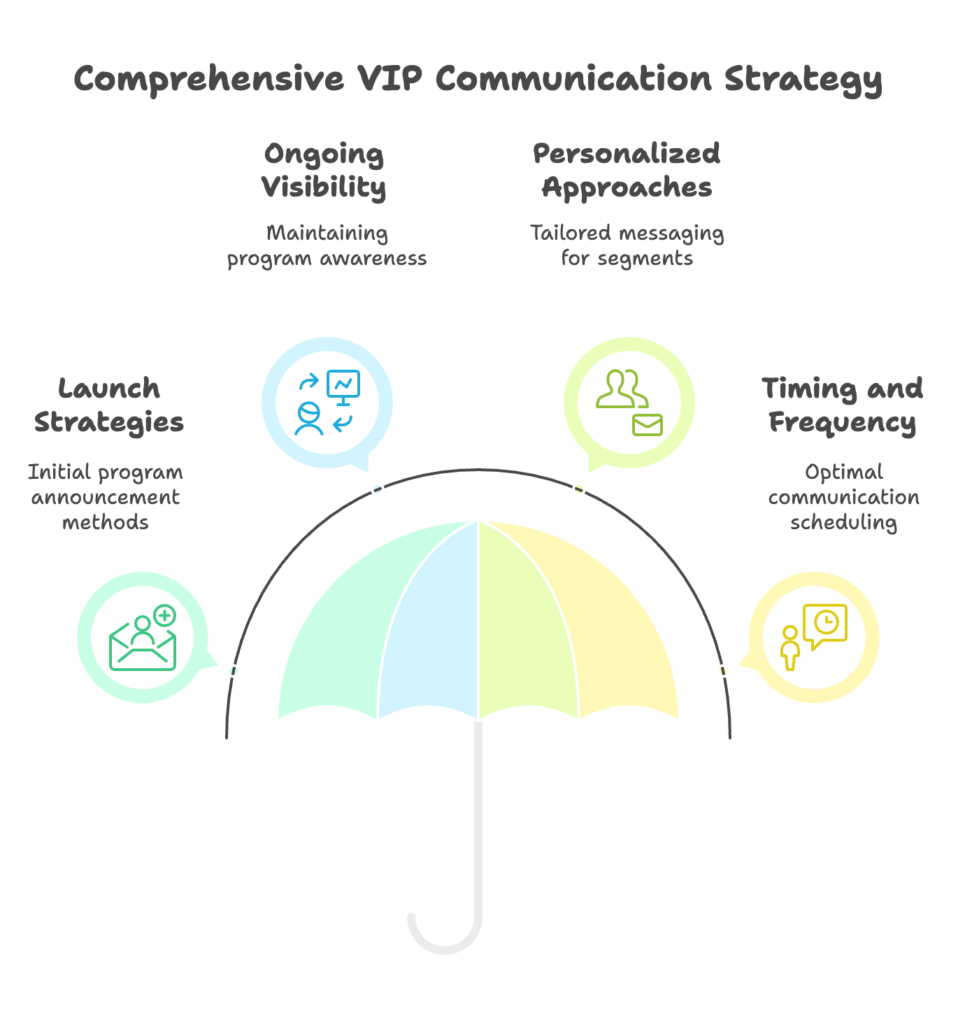
Announcing and Promoting Your VIP Program
Launch Communication Strategies
Start strong with a comprehensive launch campaign:
- Email sequence: Create a series of emails introducing the program, explaining benefits, and providing clear next steps
- On-site announcements: Use banners, pop-ups, or dedicated landing pages to highlight your new program
- Social media promotion: Share teaser content and excitement about exclusive new benefits coming for loyal customers
When launching, focus on clarity and simplicity. Avoid overwhelming customers with complex details; instead, emphasize the most compelling benefits and how customers can start taking advantage of them immediately.
Ongoing Visibility Tactics
Keep your program top-of-mind with consistent visibility:
- Dedicated program page: Create a comprehensive hub where customers can learn about tiers, benefits, and qualification criteria
- Account dashboard integration: Display tier status, available benefits, and progress metrics in customer accounts
- Progress notifications: Send updates when customers are approaching a new tier threshold to encourage additional purchases
Visual elements like progress bars or status indicators can powerfully motivate customers by gamifying the progression through your loyalty tiers. Seeing that they’re just one purchase away from reaching the next level can be a compelling reason for customers to make another purchase sooner.
Personalized Communication Approaches
Tailored Messaging by Customer Segment
One-size-fits-all messaging won’t resonate with your VIP customers:
- Purchase history customization: Reference past purchases or browsing behavior in communications
- Tier-specific content: Create different message versions for each customer tier, highlighting relevant benefits
- Segment-specific promotions: Develop targeted promotional calendars for different customer segments
Growth Suite’s customer analysis capabilities can help you identify patterns in customer behavior that inform more relevant, personalized communications. For example, you might discover that certain high-value segments respond better to exclusivity messaging while others are more motivated by concrete savings.
Timing and Frequency Considerations
Strategic timing significantly impacts the effectiveness of your communications:
- Optimal timing: Identify the best days and times to announce exclusive offers based on customer engagement patterns
- Special occasion rewards: Implement birthday rewards, anniversary offers, or seasonal perks for VIP customers
- Communication pacing: Find the right balance—too frequent communications can create fatigue, while too infrequent ones risk program disengagement
Monitor open rates, click-through rates, and conversion metrics to optimize your communication schedule. The ideal frequency varies by industry and customer segment, so testing different approaches is essential to finding what works for your specific audience.
Measuring and Optimizing Your Incentive Program
The launch of your incentive program is just the beginning. Continuous measurement and optimization are essential for long-term success. Without proper analytics, you can’t determine if your program is actually driving the desired behavior changes.
Key Performance Indicators (KPIs) to Track
Revenue and Profitability Metrics
Focus on financial impact measures:
- Average order value changes: Has AOV increased among VIP customers since program implementation?
- Repeat purchase rate: Are VIP customers buying more frequently now?
- Program ROI: Do the incremental sales generated exceed the costs of your incentive program?
These metrics should be compared both to pre-program baselines and to control groups (if available) to isolate the true impact of your incentives. Growth Suite’s analytics dashboard can automate many of these comparisons, helping you quickly identify program successes and opportunities for improvement.
Engagement and Behavioral Metrics
Look beyond revenue to understand program engagement:
- Offer redemption rates: What percentage of exclusive offers are actually being used?
- Program participation: How many eligible customers are actively engaging with the program?
- Tier advancement rates: Are customers progressing through your tiers as expected?
Low engagement metrics may indicate communication issues, overly complex program structures, or benefits that don’t resonate with your customer base. High engagement with limited revenue impact might suggest your incentives are being used but aren’t driving incremental purchases.
Testing and Optimization Strategies
A/B Testing Approaches for Incentives
Systematic testing leads to program improvements:
- Reward structure testing: Compare different discount levels, point values, or benefit packages
- Financial vs. experiential testing: Test whether your customers respond better to monetary rewards or exclusive experiences
- Qualification threshold testing: Experiment with different tier requirements to find the optimal balance
When conducting tests, ensure you’re isolating variables properly and allowing sufficient time to gather meaningful data. Quick changes based on limited information can lead to false conclusions and suboptimal program adjustments.
Continuous Improvement Process
Establish a systematic approach to program refinement:
- Test-and-learn methodology: Implement structured experiments with clear hypotheses and success metrics
- Customer feedback integration: Regularly solicit and incorporate feedback from program participants
- Quarterly program reviews: Schedule formal reviews to assess program performance and plan improvements
Remember that customer preferences evolve over time. What works today may not work next year, so continuous optimization is essential for maintaining program effectiveness and customer engagement.
Case Studies: Successful High-Value Customer Incentives on Shopify
Learning from real-world examples can provide valuable insights and inspiration. These Shopify merchants have successfully implemented high-value customer incentive programs with impressive results.
Retail and Apparel Success Stories
UNTUCKit’s Referral Strategy
UNTUCKit, a premium men’s shirt retailer, implemented a referral program specifically targeting their high-value customers:
- Offered a generous 25% discount to both the referrer and the new customer
- Personalized referral messaging based on the referrer’s fit preferences and shopping history
- Created a unique referral link that tracked the entire customer journey
The results were remarkable: a 16% increase in customer acquisition from referrals and a 22% higher average order value from referred customers compared to those acquired through other channels. The key success factor was the strategic focus on existing high-value customers who already understood the brand’s value proposition.
LSKD’s Mobile App Loyalty Approach
Australian activewear brand LSKD created an innovative loyalty approach centered around their mobile app:
- Offered exclusive limited-time product drops only available to app users
- Implemented personalized push notifications with targeted promotions based on past purchases
- Created app-exclusive early access to sales for loyalty program members
This approach resulted in a remarkable 50% revenue increase from existing customers within six months of implementation. By making their mobile app the primary channel for exclusive benefits, LSKD increased both app downloads and customer engagement significantly.
Subscription-Based Model Examples
Coffee Bean and Tea Leaf’s Subscription Program
This specialty coffee retailer created a tiered subscription model to reward their most loyal customers:
- Offered customizable subscription options with increasing benefits at higher commitment levels
- Integrated their points-based loyalty program with subscription purchases, providing double points for subscription orders
- Provided exclusive early access to seasonal and limited-edition products for subscribers
The program achieved a 35% increase in subscription conversion rate and reduced churn by 28%. The key insight was that their high-value customers valued consistency and exclusivity more than occasional discounts.
Jenny Craig’s Personalized Experience
Weight loss company Jenny Craig implemented a holistic approach to customer loyalty on their Shopify Plus store:
- Created highly personalized meal plan recommendations based on customer preferences and goals
- Bridged online and offline experiences by connecting digital purchases with in-person coaching sessions
- Established a tiered loyalty program with increasingly personalized nutrition guidance at higher levels
This integrated approach resulted in a 40% increase in customer retention and a 25% higher lifetime value for program participants. By focusing on personalization rather than discounts, Jenny Craig created a high-value experience that customers were willing to pay premium prices for.
Future Trends in High-Value Customer Incentives
To stay ahead of the competition, forward-thinking Shopify merchants should keep an eye on emerging trends in customer incentives. The landscape is evolving rapidly, with technology enabling increasingly sophisticated and personalized approaches.
Emerging Technologies and Approaches
AI and Predictive Analytics Applications
Artificial intelligence is transforming how merchants identify and incentivize high-value customers:
- Predictive needs analysis: AI algorithms that anticipate customer needs before they explicitly express them
- Automated personalization: Dynamic incentives that adjust in real-time based on individual customer behavior
- Proactive rewards: Systems that identify potential churn risk and automatically deploy retention incentives
Growth Suite is at the forefront of this trend, using AI to analyze customer behavior patterns and determine the optimal timing and structure for personalized offers. This approach moves beyond simple segmentation to truly individualized incentive strategies.
Omnichannel Loyalty Integration
The boundaries between online and offline shopping experiences continue to blur:
- Online-offline connection: Loyalty programs that seamlessly track and reward both e-commerce and in-store purchases
- Mobile app integration: Apps that enhance the in-store experience through personalized offers and information
- Unified customer profiles: Comprehensive customer data that incorporates interactions across all touchpoints
For Shopify merchants with physical locations, this integration creates opportunities to provide truly cohesive customer experiences that recognize and reward loyalty regardless of purchase channel.
Evolving Customer Expectations
Personalization and Relevance Demands
Customer expectations around personalization continue to rise:
- Hyper-personalized incentives: Offers tailored not just to segments, but to individual preferences and behaviors
- Brand alignment: Growing expectation that incentives reflect the brand’s overall values and positioning
- Values-based loyalty: Programs that reward actions aligned with shared values, not just purchases
Generic incentives increasingly feel impersonal and outdated to sophisticated consumers. The future belongs to brands that can deliver relevant, perfectly timed offers that feel individually crafted—even when deployed at scale.
Experience-Based Rewards Trends
The definition of “value” is expanding beyond financial benefits:
- Experiential focus: Shift toward exclusive experiences, events, or access as primary loyalty rewards
- Community building: Creation of exclusive communities or groups for top-tier customers
- Social impact integration: Programs that incorporate charitable components or sustainability initiatives
Particularly for premium brands, the exclusivity and status conferred by experience-based rewards often drive stronger emotional connections than traditional discounts or points programs.
Conclusion: Building a Sustainable High-Value Customer Strategy
Creating effective incentives for your best Shopify customers isn’t a one-time project—it’s an ongoing strategy that evolves with your business and customer needs. The most successful programs balance short-term engagement tactics with long-term relationship building.
Long-Term Relationship Building
Creating Genuine Customer Connections
Beyond transactions, focus on building meaningful relationships:
- Authentic interactions: Move beyond purely transactional relationships toward genuine connections
- Emotional loyalty: Foster attachment to your brand through consistent, positive experiences
- Customer-centric culture: Develop organizational values that prioritize customer relationships
The strongest customer loyalty isn’t bought with discounts—it’s earned through consistent delivery of value, recognition, and positive experiences. When customers feel genuinely valued and understood, price sensitivity decreases and brand advocacy increases.
Balancing Acquisition and Retention
Find the right equilibrium between growing your customer base and nurturing existing relationships:
- Integrated strategies: Create clear pathways from first purchase to ongoing loyalty
- New-to-loyal journey mapping: Design the entire customer experience with loyalty in mind from day one
- Resource allocation: Invest appropriately across the customer lifecycle based on potential return
While this article focuses on high-value customer incentives, a truly effective strategy recognizes the importance of both bringing in new customers and developing them into loyal advocates over time.
Implementation Roadmap
Getting Started with Basic Incentives
Begin with achievable steps that deliver immediate impact:
- Customer tagging: Implement basic high-value customer tagging based on purchase history
- Exclusive communications: Create a VIP email segment with special offers and early access
- Personalized discounts: Set up customer-specific discount codes for your top spenders
These foundational elements require minimal investment while providing a framework for more sophisticated programs as your strategy matures. Start small, measure results, and expand based on what works for your specific customer base.
Scaling to Advanced Programs
As your program proves successful, consider these more advanced approaches:
- Technology investment: Implement specialized loyalty or CRM solutions to enable more sophisticated strategies
- Team structure: Designate specific responsibility for customer loyalty within your organization
- Phased implementation: Create a 12-month roadmap for gradually enhancing your incentive program
Remember that even the most complex loyalty programs began with simple steps. By starting with a clear focus on your highest-value customers and gradually expanding your approach, you can build a sustainable program that drives meaningful business results.
The most successful high-value customer incentive programs share a common characteristic: they’re built on a deep understanding of what truly matters to their best customers. By combining data-driven insights with genuine care for your customers’ experience, you can create incentives that not only drive short-term sales but build the foundation for lasting loyalty and advocacy.
References
- Flits. (2023, August 9). How To Create Value For Customers Via Your Shopify Customer Account Page. https://blog.getflits.com/how-to-create-value-for-customers-via-your-shopify-customer-account-page/
- Shopify App Store. (2025, March 20). Growth Suite. https://apps.shopify.com/growth-suite
- Duo. (2024, November 18). How To Entice Customers To Spend More On Your Shopify Store. https://getduo.co/blog/how-to-entice-customers-to-spend-more-on-your-shopify-store
- First Pier. (2023, August 15). Exclusive Shopify Discounts for Select Customers. https://www.firstpier.com/resources/shopify-discount-for-specific-customer
- Ecorn Agency. (2024, December 21). Shopify Loyalty Programs: A Strategic Guide to Customer Retention. https://www.ecorn.agency/blog/shopify-loyalty-programs-strategic-guide-customer-retention
Ready to supercharge your Shopify store’s sales with perfectly optimized discount codes and customer incentives? Growth Suite is a Shopify app that helps you analyze customer behavior, segment your audience effectively, and deliver personalized incentives that drive loyalty and increase revenue. With AI-powered campaign recommendations and easy-to-use tools, you can create compelling offers for your high-value customers in minutes. Install Growth Suite with a single click and start seeing results today!
Don’t forget to read other guides;
